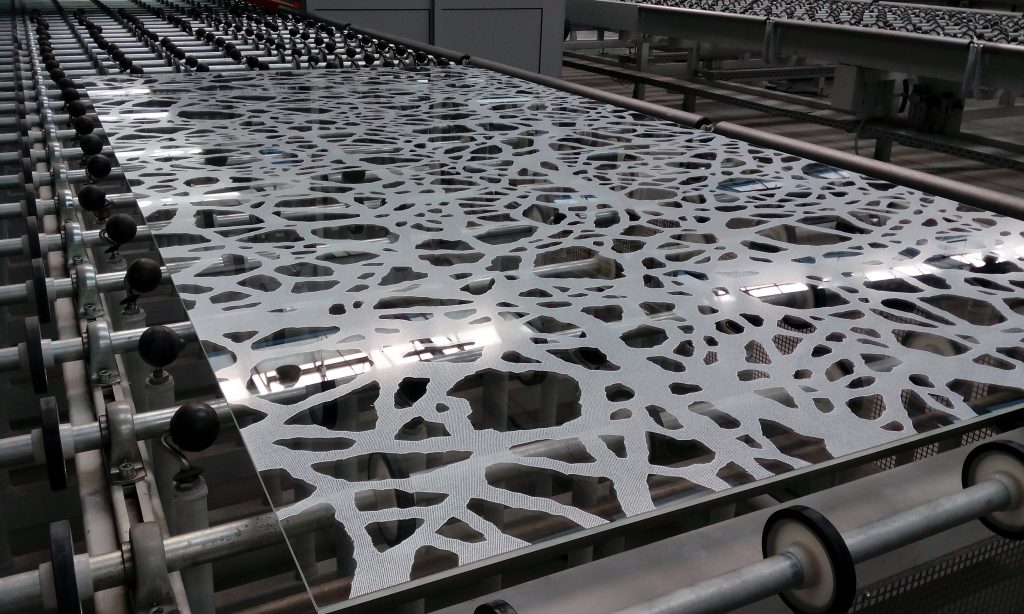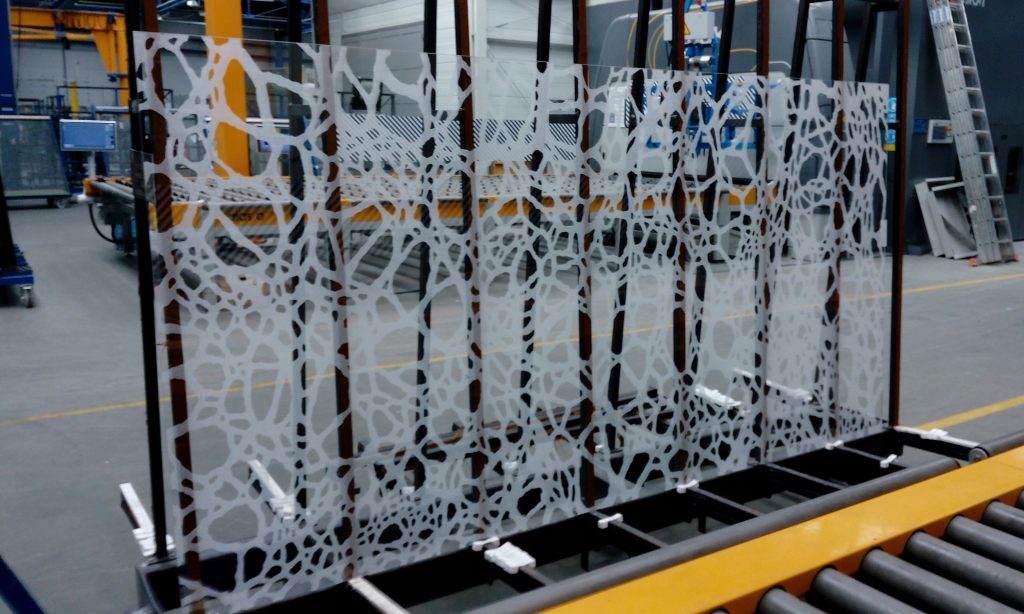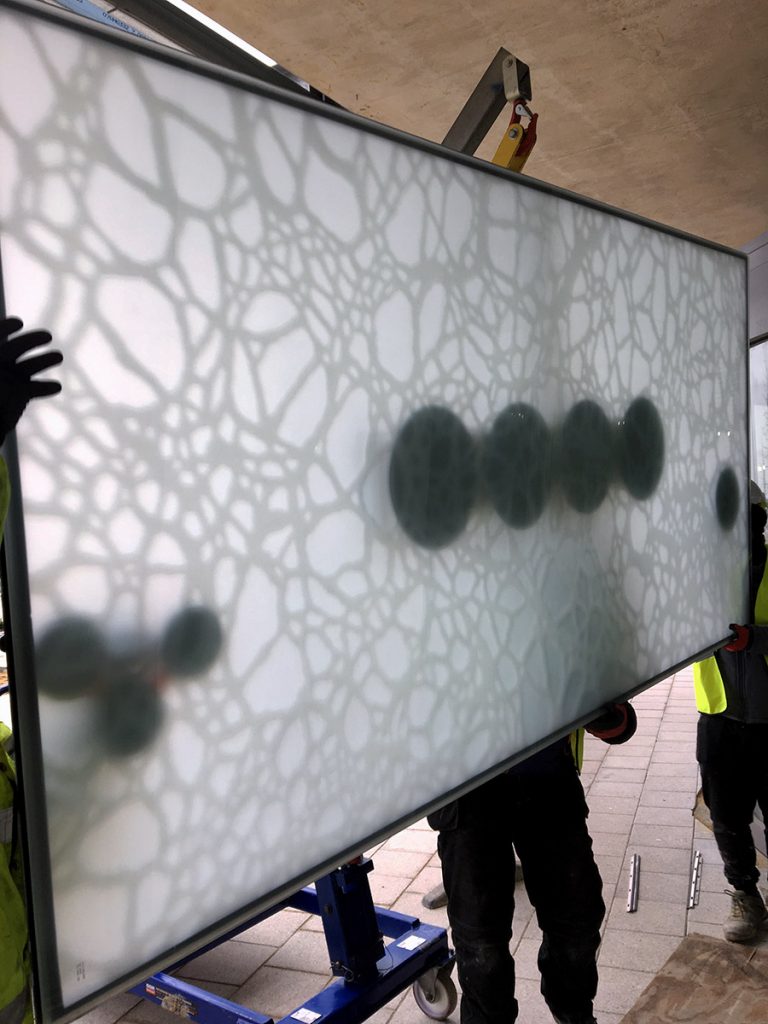Futurecity delivered Royal Papworth Hospital’s approved Arts Strategy, completing 4 large-scale permanently embedded art commissions within the new hospital. The artworks help create a healing environment, supporting the positive wellbeing of staff, patients and visitors.
One of the 4 commissions is Until the day you feel good by contemporary artist Adam Ball. The two ground floor hospital entrances are enhanced by Ball’s digitally lit glass facades. Adam worked with staff across hospital departments to produce large scale hand cut representations of microscopic imagery, digitally embed these within 20 4metre x 2metre glass panels and lit them with a programmable LED system that changes with the 24hr clock and annual seasons.
Read the interview with Adam Ball below.
FC: Can you tell us what it was like working on a different scale and in a new location / context for this commission?
As soon as we started planning this installation it became evident how different it would need to be – making something on an architectural scale is a different process from anything I’d made in the past. I have made light boxes for exhibitions but rarely over 2 metres in scale, so to embed a 3 x 16m version into the external wall of a hospital involved a lot of collaboration. As a permanent installation, it was also essential that it related to its context and the progress made at the hospital.
x
FC: How do you hope this commission will contribute to Papworth?
The creation of the piece, entitled Until the day you feel good, was underpinned by my belief in the importance of art in the recovery of patients, and how light and colour can improve a patient’s recovery time or positively affect their mental health. This became increasingly evident to me when my young daughter fell ill and we found ourselves in and out of hospital. I was now able to observe, in a very personal way, how different environments can alter the way you feel even under stressful circumstances. Hospitals can be intimidating environments so I wanted my work to act as a welcoming for patients and their families as they arrive, and to create an optimistic feel and brief distraction from their circumstances.
FC: How do the materials / fabrication methodologies that you used in this commission compare to your usual practice?
The artwork for this piece, as in my previous light boxes, was made from white fabric hand-cut with a surgical scalpel. This is however where the similarities ended as the art glass was made from printed glass and laminated fabric made into glazed units in a factory in Poland. It was necessary to work closely on the factory floor to adapt industrial processes to create the glass we needed. The lights are from a LED lighting system made in Italy, and pre-programmed to change colour slowly throughout the year – warm oranges in the winter and cool blues in the summer, gradually evolving with the passing of time.
x
FC: Has your practice developed as a result of the commission?
Yes, it had a significant impact. The project was 8 years in the making, and so as the project evolved, my work evolved. To ensure the commission reflected the work taking place at the hospital, I collaborated with many of the different departments (pathology, chemistry, nursing) and even witnessed thoracic surgery first hand. To have access to such a wealth of information over a long period of time inevitably affected my view on the kind of work I wanted to produce.
FC: Did the commission change your ideas of what you would like to focus on in future work?
Collaborating with a team, and often getting advice on subjects I knew very little about, was inspiring. I enjoy collaborating as it enables you to view things differently and create in a way that you wouldn’t otherwise be able to. Making public art is the ultimate in collaboration, and it’s a responsibility, but it’s something I hope to be able to do again and work with similar teams such as those at HOK and Futurecity.
x
FC: What can we expect from you in the future?
I’m currently working on a large commission for a private Mexican collector as well as creating a new body of work in my London studio for my next exhibition.








